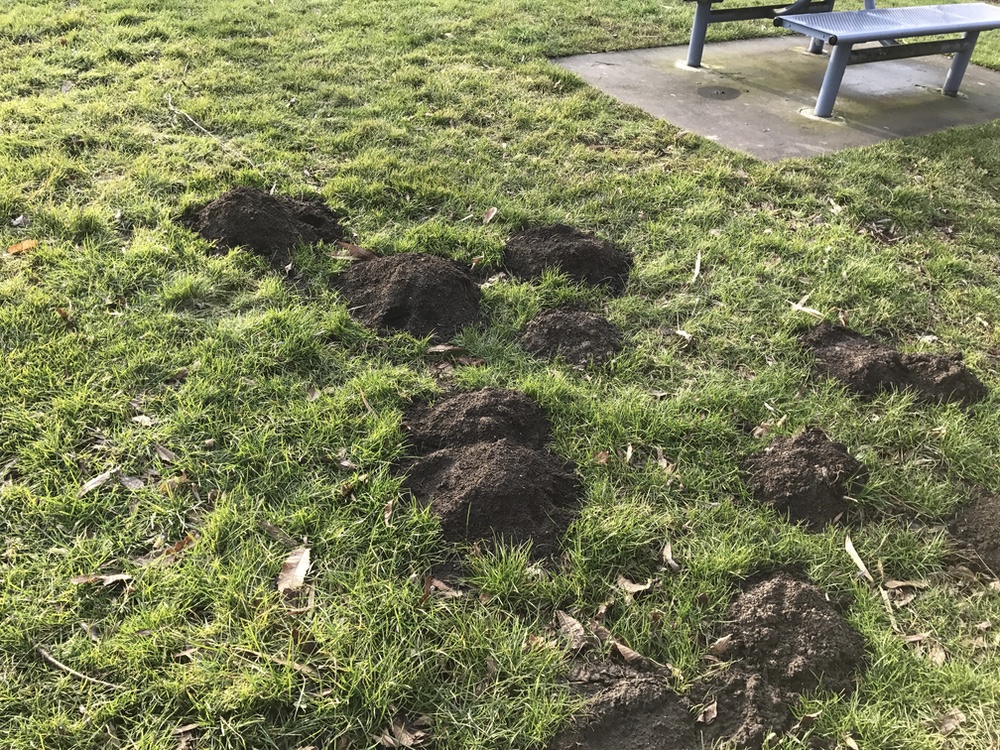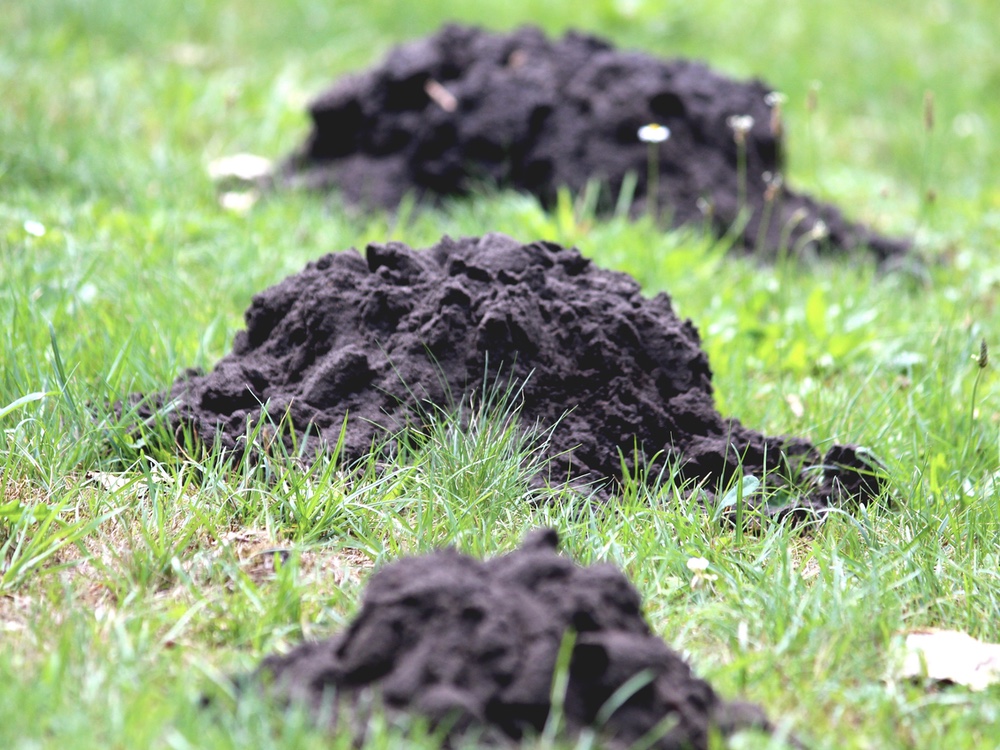Moles (Talpa europaea L.) are subterranean mammals that do not like to surface unless necessary. The critters are between 10 and 15 cm long, are black, light brown, golden or even white this last is not common. The hairs of the fur show no direction of growth, allowing them to move forward and backward easily through the corridors they build. They have very distinctive outward pointing broad legs with wide nails making them excellent diggers.

The biggest problem experienced with mole infestation is the damage to lawns and gardens, due to the tunnels they dig. Your carefully landscaped flower beds can be quite destroyed by molehills and they work up the soil through their shallow tunnels. In addition, roots can come up and young plants can be damaged as a result of the digging. Actually, moles prefer to live in the forest, but as their habitat continues to be reduced by the construction of homes and buildings, they are becoming more common in our habitat. Problems caused by digging moles can occur suddenly and often people are then left with major damage to their property. Unfortunately, you cannot prevent moles from establishing themselves in your yard, so preventative measures are actually not always possible, unfortunately.

Moles have short black fur, but they can also be white, light brown and golden. The hairs are very smooth, allowing the mole to move through tunnels in all directions. Because of their poor vision, a mole has tactile hairs on the tip of its tail and on the outside of its digging legs. Their legs are very broad, with long broad nails and palms that face outward. They are about 10-15 cm tall and their tail length is about 2.5 – 4 cm. Moles weigh between 30-60 grams. Moles do not dig because they are looking for food, but they always find food in existing burrows. A mole can dig as many as 12 to 15 meters of superficial burrows per hour and thus also quickly cause a lot of damage.
They mainly eat worms but also grubs, maggots and other insects and larvae, so they are not picky about this. The mole prefers to live in loose, humus-rich soil, where it finds a lot of food that ends up in its burrow.
Moles reproduce between March and June and females give birth to 3 – 5 young per litter after a 3-week gestation period. A mole sometimes covers parts of the tunnels with grass and leaves so that nests can be made. After about 7 weeks, the young start looking for food independently and after 9 weeks they have to say goodbye to their mother, who then wants the burrow for herself again. Not all young moles survive, about 60% die in the first year this is partly because young moles move above ground with all its dangers. A mole that does survive can live up to 3 years.

Should you find mole ridges or molehills in your yard or on your property you almost certainly have a mole problem. These animals prefer not to come above ground, so you won’t be able to catch them easily. Moles dig shallow tunnels, just below the surface, which will create raised ledges. These are fairly easy to spot. In addition, moles dig deep tunnels that are about 10 – 40 cm into the ground and are not visible, but where you may find molehills.

Moles can often be found in gardens, sports fields, pastures, arable fields, under paving and vegetable gardens. At spot fields, moles can pose a danger by digging the trenches can cause subsidence which can cause injuries to athletes. So here the control of moles is very necessary
It is wise to contact a professional pest control Protect Pest Control for effective mole control.
Protect Pest Control is skilled and has mastered all techniques optimally, so they take the mole’s lifestyle into account when controlling. We always provide a quick, professional solution to your mole problem.
When fighting moles, we can use trap setting. The rides are traced and then traps are placed here.
Protect Pest Control can control the mole infestation in a very effective way and help you with elimination and prevention for the future if possible…. Leaving a mole infestation untreated is highly inadvisable as the mole infestation can get out of control and you will not be able to prevent major damage to your property.
Protect Pest Control is a professional pest control company and uses safe and successful ways to control a mole infestation.
Contact Protect Pest Control now to schedule an on-site appointment or for advice and more information.
